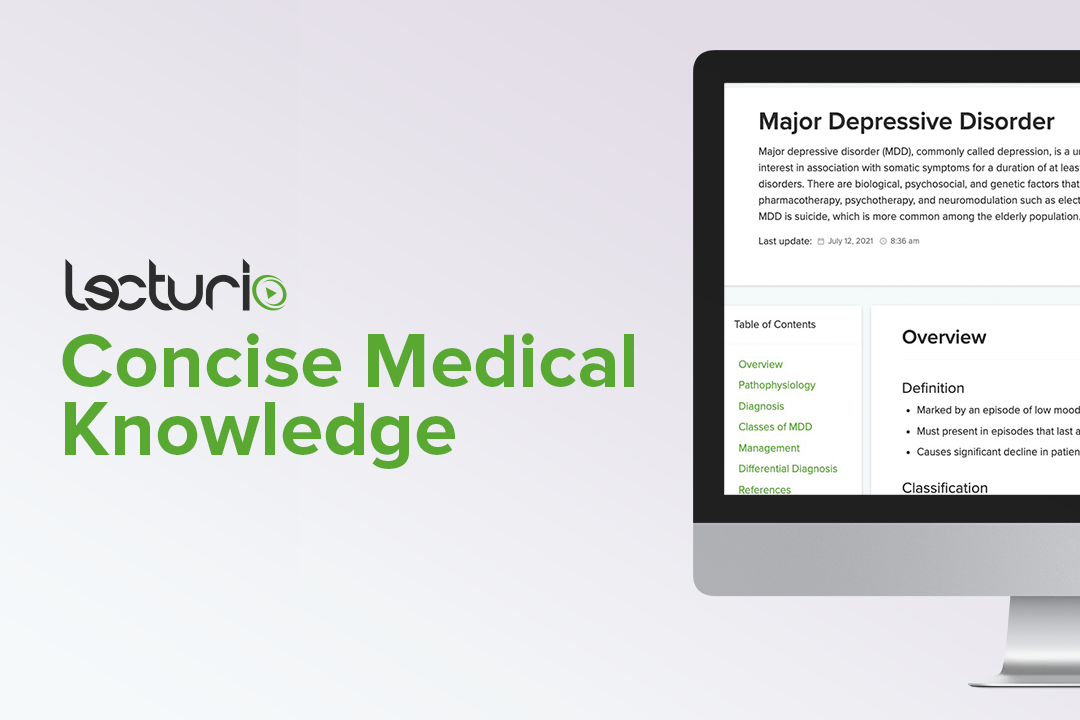Playlist
Show Playlist
Hide Playlist
Depression: Definition and Pathogenesis
-
Slides Depression.pdf
-
Download Lecture Overview
00:00 Now we're going to talk about depression, one of the most common mood disorders that's extremely important to know about for your exam. So what is depression? Well, it's an episode of dysphoria that's associated with more than a low mood, but also associated with a loss of interest in activities. The epidemiology for depression includes a lifetime prevalence of 12%. The onset can be at any age, however, young adults and elderly are at particular risk. The prevalence in 18 to 29-year-old individuals is actually threefold higher than in other groups. Females will experience nearly threefold higher rates of depression than man and there is actually no ethnic or socioeconomic difference. However, a very important note to keep in mind is that while depression can occur across ethnicities, many minorities are actually more likely to be misdiagnosed and instead of being accurately diagnosed with depression or mood disorder, they may be labeled as having schizophrenia, an important note to consider. About 2/3 of all depressed patients will contemplate suicide and 10-15% actually died by suicide. Only half of the patients with major depressive disorder will ever receive treatment. So most people go completely unnoticed. Do you know who described depression as anger turned inwards? That was Sigmund Freud. He actually wrote about this concept in his 1917 paper called Mourning and Melancholia. Here he described depression as introjected rage over object loss. Let me give you a clinical case example. Consider a 40-year-old woman. She has been struggling with feeling unloved at home, dissatisfied in her career and taken advantage of by her extended family. She has had longstanding troubles with her sleep, appetite, sense of self-worth, energy and she has lost interest in all of her hobbies. 02:23 When she learns that her husband has been secretly taking money from her personal account, this woman becomes enraged and furious at her husband. But then, she takes her own life. 02:36 A perfect example of anger turned inwards. The cause of depression is not exactly known, but we do believe that biological, genetic, environmental, and psychosocial factors play a role. 02:52 Let's consider this chart here. There's a lot of information. This all describes the pathogenesis of depression. So what is decreased in patients with depression? Well, we know that drugs that increase the availability of serotonin, noradrenaline, and dopamine will actually alleviate symptoms of depression. And therefore we think that all of these neurotransmitters are reduced in people who have depression. Let's talk a little bit about the monoamine hypothesis. 03:24 This postulates that antidepressants increase the amount of noradrenaline or norepinephrine and serotonin in the brain primarily by increasing the concentration of these neurotransmitters in the synapse and by downregulation of their postsynaptic receptors. 03:43 Another question to post to you is what neurotransmitter is decreased in the cerebrospinal fluid in patients with depression? That answer is serotonin. When it comes to neuroendocrine abnormalities, what 2 main factors in this category do you know about that are associated with depression? The answer is high cortisol and this is from hyperactivity of the hypothalamic pituitary adrenal access, also thyroid disorders, very important to know are associated with major depression. There are also psychosocial factors, but before we get to those let's talk a little bit more about what the hippocampus has to do with cortisol. Well, it tends to be especially sensitive to the neurotoxic properties of cortisol which is actually elevated during times of stress. The hippocampal volume may actually be correlated to a depressed episode so we know with increased stress comes higher cortisol levels and then depression and changes to the hippocampus. Now, how can family affect to developing depression? Well, a few things. Loss of a parent before the age of 11 can be associated with depression. But a stable family and stable psychosocial functioning such as good attachments to early caregivers, support network of family and friends are all really good prognostic factors. Genetics also play a role in developing depression. We tend to think that depression can be inherited and pass along in the generations. Usually, if somebody's presenting with depression, it's going to be likely that someone in their family also has had depression. First degree relatives are 2-3 times more likely to have major depression.
About the Lecture
The lecture Depression: Definition and Pathogenesis by Helen Farrell, MD is from the course Mood Disorders. It contains the following chapters:
- Depression
- Depression - Pathogenesis
- Hippocampus
Included Quiz Questions
Which of the following statements about depression is NOT true?
- It’s is more common in African American females.
- About 10-15% commit suicide
- Sigmund Freud described depression as anger turned inward
- Only half of the patient receive treatment
- Females experience it 1.5-3 times more than in males
Which of the following neurotransmitter changes are seen in depression?
- ↓serotonin, ↓norepinephrine, ↓dopamine
- ↓serotonin, ↑norepinephrine, ↓dopamine
- ↓serotonin, ↑norepinephrine, ↑dopamine
- ↑serotonin, ↑norepinephrine, ↓dopamine
- ↑serotonin, ↑norepinephrine, ↑dopamine
According to the monoamine hypothesis, what is the mechanism of action of antidepressants?
- Antidepressants increase the concentration of NE and serotonin in the synapse and downregulate the post-synaptic receptors.
- Antidepressants increase the concentration of NE and serotonin in the synapse by downregulating the pre-synaptic receptors
- Antidepressants decrease the concentration of NE and serotonin in the synapse and downregulate the post-synaptic receptors.
- Antidepressants decrease the concentration of NE and serotonin in the synapse by upregulating the postsynaptic receptors.
- Antidepressants increase the concentration of NE and serotonin in the synapse and upregulate the pre-synaptic receptors.
What changes are seen in the Hippocampus during depression?
- Elevated cortisol during stress is neurotoxic to the Hippocampus.
- Decreased dopamine affects the functionality of the Hippocampus.
- Elevated concentrations of NE acts as a neurotoxic agent on the Hippocampus.
- Cortisol level falls during the times of stress and impairs the functions of the Hippocampus.
- Elevated serotonin is neurotoxic to the Hippocampus.
Customer reviews
4,0 of 5 stars
| 5 Stars |
|
2 |
| 4 Stars |
|
0 |
| 3 Stars |
|
0 |
| 2 Stars |
|
1 |
| 1 Star |
|
0 |
I found the class to be very detailed and informative.
Content is ok, but she reads off the slides almost verbatim which is distracting and unhelpful. It would be better if there were fewer words on each slide. I'mn sure this isn't the case, but I get the impression that she doesn't have a solid grasp of the content, hence the slide reading line by line.
1 customer review without text
1 user review without text




